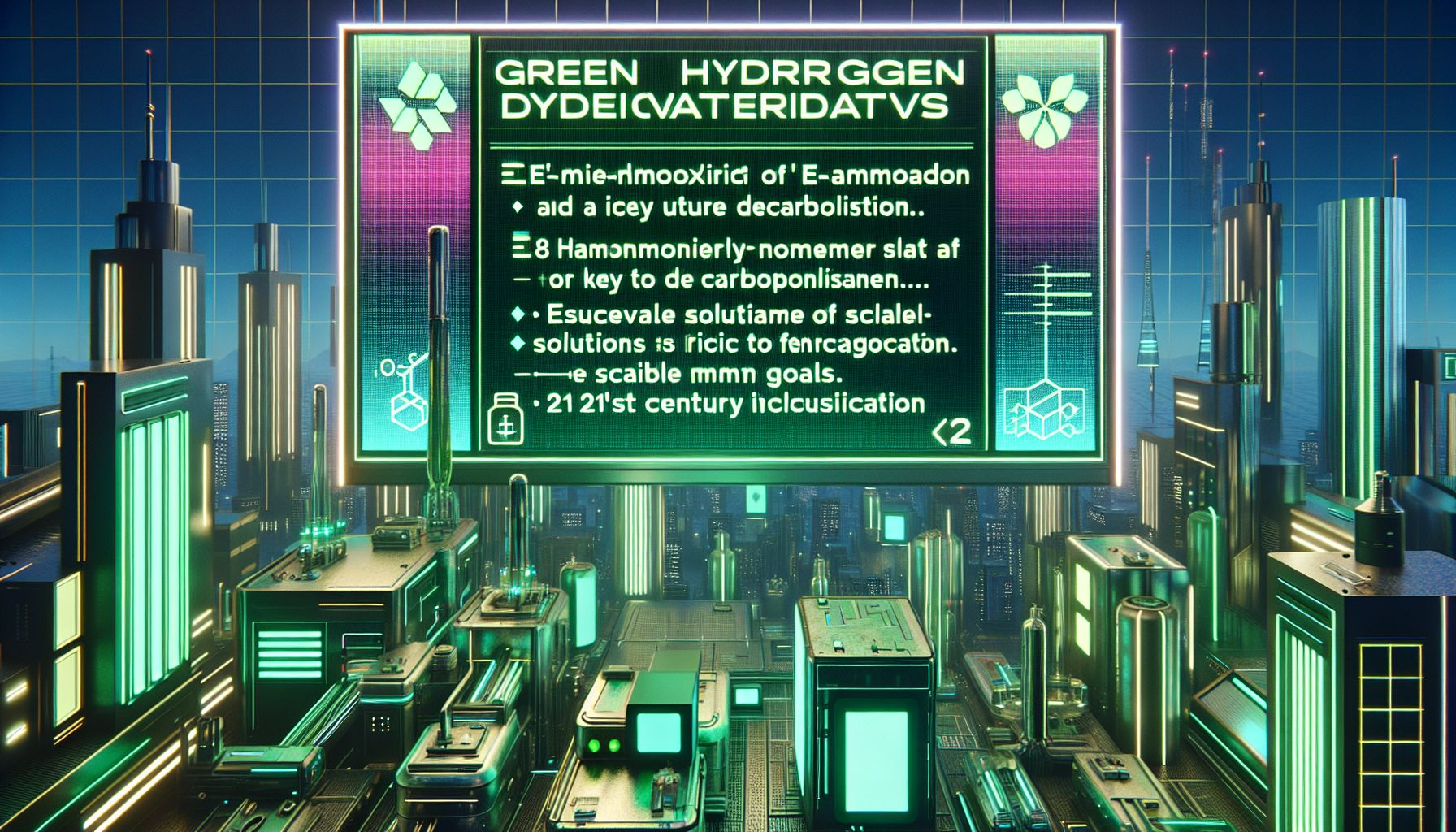Green Hydrogen Derivatives: The Key to Future Decarbonisation

Copenhagen, Monday, 8 September 2025.
Green hydrogen derivatives like e-methanol and e-ammonia are paving the way for deep decarbonisation. These innovations help meet emission goals, offering scalable solutions where direct hydrogen use isn’t feasible.
The Role of Green Hydrogen Derivatives
Green hydrogen derivatives, such as green ammonia and green methanol, are stepping into the spotlight as key players in our fight against climate change. They provide a clean alternative to fossil fuels, enabling industries like shipping and aviation to cut emissions significantly. For instance, green ammonia, produced by combining green hydrogen with nitrogen, has become a promising fuel for shipping. It can be used as a direct fuel or as a building block for fertilizers, showcasing its versatility [1].
Meeting Emission Goals with E-fuels
E-methanol and e-kerosene are other examples of green hydrogen derivatives making waves in the energy sector. E-methanol, derived from hydrogen and CO₂, offers storage benefits as it doesn’t require cooling or pressurised storage like hydrogen. E-kerosene, on the other hand, can blend seamlessly with fossil jet fuel and is considered more scalable compared to biofuels. These innovations are crucial as they help meet stringent emission reduction goals set by governments worldwide [1].
Global Perspectives and Regulatory Changes
Countries like Denmark and Greece are at the forefront of promoting green hydrogen and its derivatives. Denmark’s robust biogas production positions it as a key supplier of biogenic CO₂, essential for synthesising e-fuels. Meanwhile, Greece is transforming into a strategic hydrogen hub, developing infrastructure for distributing hydrogen and its derivatives across Europe and the Middle East. The European Union’s regulations will soon require the use of biogenic CO₂, pushing further innovation and adoption of these green solutions [1][6].
Economic Implications and Market Dynamics
The economic landscape for green hydrogen derivatives is evolving rapidly. In India, for example, recent auctions for green hydrogen-based ammonia have resulted in remarkably low prices compared to Europe. However, experts caution that actual costs may rise once projects are realised. This price disparity highlights the varying degrees of market maturity and government support across regions [2].
Challenges and Opportunities
While the potential is enormous, challenges remain. The technological and financial risks associated with transitioning to green hydrogen derivatives need careful management. Governments and industries must share these risks to ensure successful implementation. Despite these hurdles, the momentum behind green hydrogen and its derivatives is undeniable. They offer a viable pathway to deep decarbonisation, promising a cleaner, more sustainable future [5].
Bronnen
- stateofgreen.com
- www.hydrogeninsight.com
- www.rystadenergy.com
- www.hydrogeninsight.com
- x.com
- voiceofrenewables.com